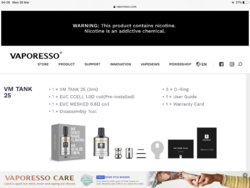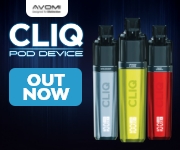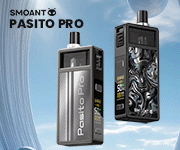eyeball kid
Legend
- Joined
- Mar 21, 2016
- Messages
- 17,774
I have no dog in this fight either. When combined with say the voopoo or vaporesso board's in mod or pod form I'm happy to crack on.My last post wasn't 100% accurate as there is one exception. I very occasionally use the Voopoo 1.2 ceramic coil at very low mtl wattage. But not before I had dismantled a few to satisfy myself that they were solid and not shedding ceramic dust. I would never continue to use one if I dropped it and I never clean and reuse them.
I agree. Can't beat cotton for flavour.
the dice have already been thrown just vaping. When smoking I knew the game was already loaded and as far as I can reasonably assess I'm minimising my health risk by vaping over smoking and try to keep informed of new developments but that's as much as we can do really. Ideally I'd not vape but I'm locked in a house watching bloody Grey's anatomy. Without this nanabhozo there could be bloodshed.

















